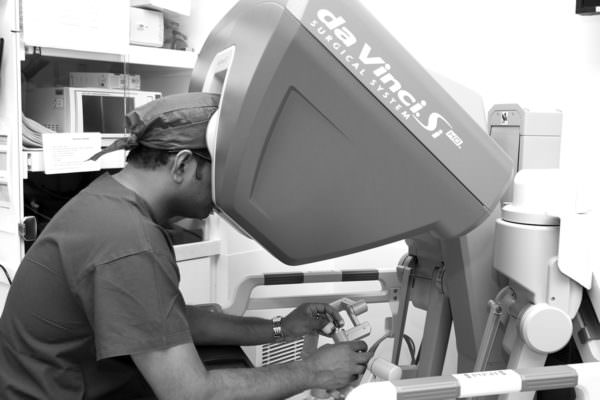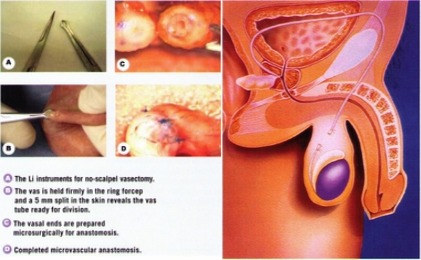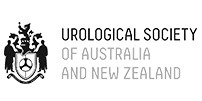Once a highly complex and challenging field, microsurgery is now becoming more manageable, thanks to technological innovations. Introducing RoboticScope®️ – one of the latest advancements that has arrived in Australia. In 2022, the country witnessed its first vasectomy reversal performed using this cutting-edge device.
In this blog, you’ll learn why microsurgeries are challenging, the innovative features of RoboticScope®️, and how this new technology is simplifying surgical procedures. You’ll learn about the benefits it brings to both patients and surgeons and get an insight into the future applications of this remarkable tool.
Why Are Microsurgeries Challenging?
Microsurgeries, such as vasectomy reversals, involve extremely small structures. The vas deferens, which carries sperm, is very small, and stitching it back together requires great precision. Surgeons must use a microscope, which can be difficult to adjust and maintain focus during the procedure. Here are some key reasons why these procedures are so difficult:
- Tiny Structures: Surgeons often work with very small structures, like blood vessels, nerves, and the vas deferens (the tube that carries sperm). These parts can be as thin as human hair, making them incredibly difficult to see and manipulate.
- High Precision: Because the structures are so small, even the slightest movement or mistake can have significant consequences. Surgeons need to be incredibly precise in their actions.
- Extended Focus: Microsurgeries can take a long time, requiring surgeons to maintain a high level of concentration and focus for extended periods. This can be physically and mentally exhausting.
- Manual Adjustments: During traditional microsurgeries, surgeons often need to adjust their microscopes manually, which can interrupt their workflow and focus.
- Ergonomic Strain: Surgeons must often maintain awkward positions for long periods, leading to physical strain and fatigue.
These challenges show why advanced technologies like RoboticScope®️, can help surgeons be more precise, reduce their fatigue, and make these delicate surgeries easier to perform.

What is RoboticScope®️?
RoboticScope®️ is an advanced robotic tool designed to assist in delicate surgeries. Introduced in Australia in 2022, it promises to improve the precision and ease of microsurgeries. Here are some of its advanced features.
Features:
- Hands-free operation: Controlled with a Head Mounted Display (HMD) and foot pedal.
- 3D Visualisation: Provides a three-dimensional view of the surgical area.
- Real-time imaging: Projects microscope images onto a screen for the entire surgical team.
- Ergonomic advantage: Allows surgeons to work in a comfortable, relaxed position.
- Automatic adjustments: Automatically refocuses and adjusts depth based on head movements.
RoboticScope®️ is a major breakthrough in microsurgery. This technology helps surgeons perform delicate procedures more easily and accurately, leading to better results for patients and less strain for doctors.
What is Robotic Vasectomy Reversal?
Robotic vasectomy reversal is a procedure that uses advanced robotic technology, like the RoboticScope®️, to reconnect the vas deferens. This technology enhances the precision and effectiveness of the surgery, making it a viable option for men seeking to restore their fertility after a vasectomy.
Benefits
- Higher Success Rates: The precision and stability of the robot can increase the chances of a successful reversal.
- Less Invasive: This method can be less invasive than traditional surgery, leading to smaller cuts and faster recovery.
- Reduced Surgeon Fatigue: The ergonomic design and hands-free operation help reduce physical strain on the surgeon, allowing them to focus more on the delicate aspects of the procedure.
- Better Patient Outcomes: Overall, using robotic technology can lead to fewer complications and quicker recovery for patients.
Robotic vasectomy reversal is shaking things up in the world of surgery. With RoboticScope®️, doctors can perform the procedure with amazing precision, leading to better results for patients. It’s less stressful for everyone involved and helps patients get back on their feet quicker.

How Does RoboticScope®️ Enhance Microsurgery?
RoboticScope®️ is a hands-free digital microscope controlled by a headset and foot pedal. It provides a 3D view and follows the surgeon’s head movements to keep everything in focus. This technology allows surgeons to work more comfortably and accurately without the need for constant manual adjustments.
First Use of RoboticScope®️ in Australia for a Vasectomy Reversal
San Day Surgery in Hornsby, Sydney, known for its expertise in robotic surgeries, has partnered with RoboticScope®️ manufacturers for a clinical trial. Dr. Katelaris, an experienced urological surgeon, performed Australia’s first vasectomy reversal using RoboticScope®️. Dr. Katelaris has been performing minimally invasive, no-scalpel vasectomies and vasectomy reversals for over 35 years. His surgery using RoboticScope®️ marks a significant advancement in medical technology in the country.
Benefits and Future Applications
When it comes to vasectomies and vasectomy reversals, even the most experienced urologists can find them challenging. This is because the vas deferens (the tube that carries sperm) is very small, and the stitches used are as thin as human hair. While it’s relatively easy to cut the vas deferens during a vasectomy, reattaching it during a vasectomy reversal is much harder. Surgeons need a microscope to carefully sew the tiny tube back together, and they often have to stop and refocus the microscope, which makes the procedure even more difficult.
Now with the introduction of RoboticScope®️, we are now facing a new era in microsurgery. RoboticScope®️ offers several benefits:
- Precision: The RoboticScope®️ provides a highly detailed, three-dimensional view of the surgical area, allowing for precise reconnection of the vas deferens.
- Stability: The device helps surgeons maintain a steady focus on the tiny structures involved, reducing the chances of error.
- Comfort: Surgeons can perform the procedure in a more comfortable, ergonomic position, which helps reduce physical strain and fatigue during long, complex surgeries.
- Efficiency: The use of robotic technology can streamline the procedure, potentially reducing surgery time and improving recovery outcomes.
- Enhanced focus: Enables surgeons to concentrate entirely on their technique without manual adjustments.
Already in use in over 20 countries, RoboticScope®️ has proven effective in various procedures, including brain surgery in Italy and eardrum reconstruction in Switzerland. In Australia, it will be tested further in other surgeries, such as plastic surgery, to explore its full potential.
Final Words
Dr. Katelaris and the team at San Day Surgery are optimistic about the benefits of RoboticScope®️. With its ability to enhance precision, reduce surgeon strain, and improve patient outcomes, this cutting-edge technology is poised to revolutionise medical procedures. As its use expands, RoboticScope®️ could become a new standard in medical care, both in Australia and globally. Dr. Katelaris and his team at San Day Surgery are leading the way, demonstrating the remarkable potential of RoboticScope®️ in real-world applications.
Are you or a loved one considering a vasectomy reversal using RoboticScope®️? Trust the expertise of Dr. Katelaris and experience the benefits of the latest advancements in medical technology.
Contact Dr. Katelaris Urology Clinic today to learn more about how the RoboticScope®️ can make a difference in your robotic vasectomy reversal surgery.
References:
Barazani, Y., Kaouk, J. and Sabanegh Jr., E., 2014. Robotic intra-abdominal vasectomy reversal: A new approach to a difficult problem. Canadian Urological Association Journal, 8(5-6), p.439.
Parekattil SJ, Gudeloglu A, Brahmbhatt J, Wharton J, Priola KB. Robotic assisted versus pure microsurgical vasectomy reversal: technique and prospective database control trial. J Reconstr Microsurg. 2012 Sep;28(7):435-44. doi: 10.1055/s-0032-1315788. Epub 2012 Jun 28. PMID: 22744901.
BHS-Website. 2022. BHS-Website. [online] Available at: <https://www.bhs-technologies.com/> [Accessed 13 October 2022].
Bhs-technologies.com. 2022. [online] Available at: <https://www.bhs-technologies.com/wp-content/uploads/2021/12/BHS_Broschuere-A4-download.pdf> [Accessed 13 October 2022].
Team, U., 2022. San Raffaele: the first brain surgery with a robotiscope. [online] Blog.unisr.it. Available at: <https://blog.unisr.it/en/san-raffaele-the-first-brain-surgery-with-a-robotiscope> [Accessed 13 October 2022].
USZ. 2022. Performing surgery by tilts of the head: the world’s first operation using 3D-RoboticScope. [online] Available at: <https://www.usz.ch/en/performing-surgery-by-tilts-of-the-head-the-worlds-first-operation-using-3d-roboticscope/> [Accessed 13 October 2022].






